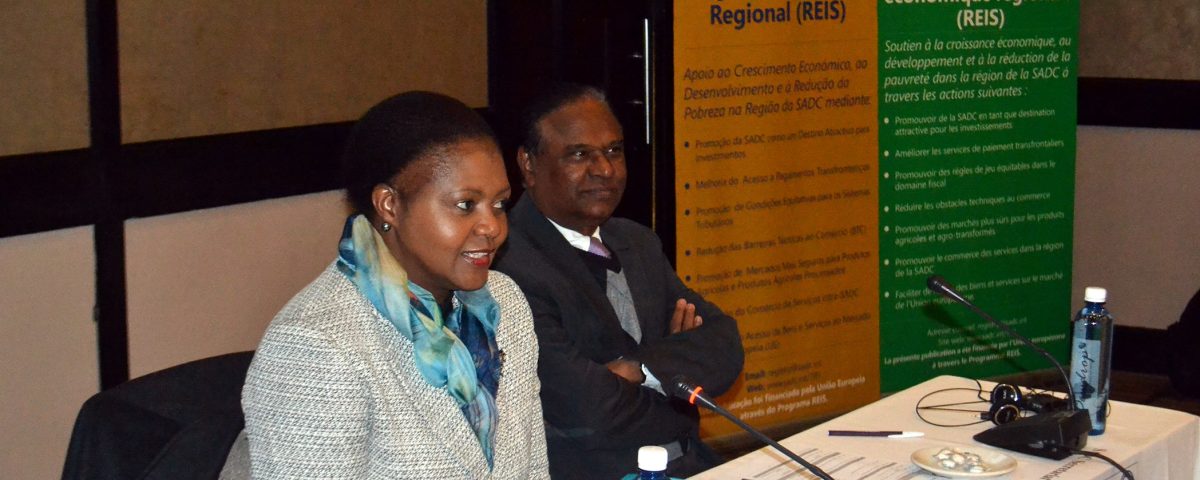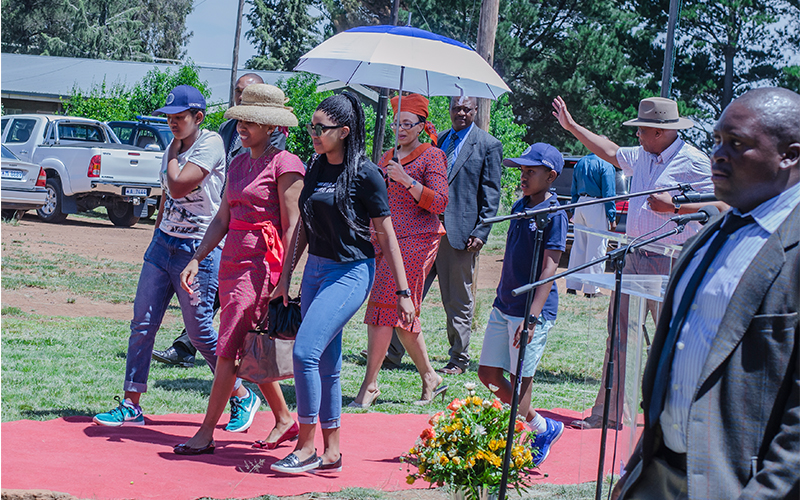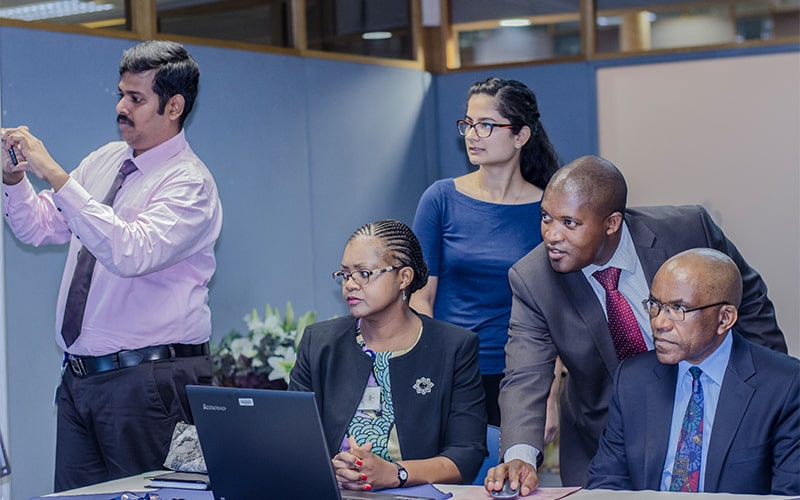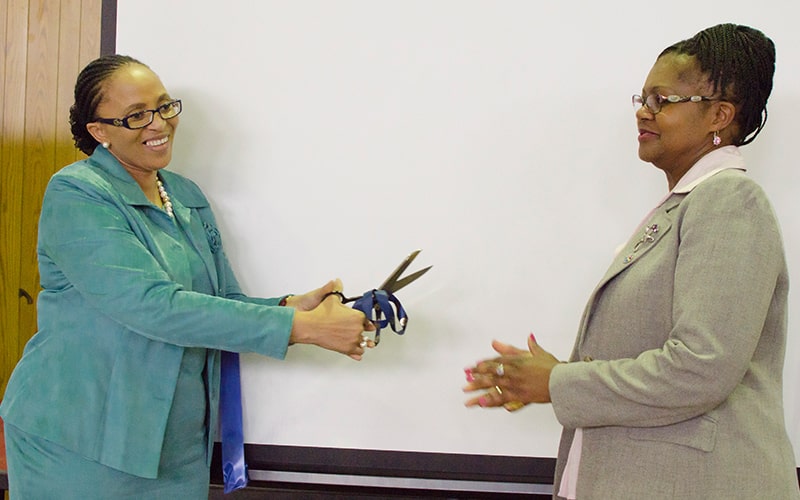
Central Bank of Lesotho Ethics Seminar
May 20, 2024
Press Statement on the Emergence and Promotion of Cryptocurrencies
May 20, 2024Speech by the Second Deputy Governor of the Central Bank of Lesotho, Ms ‘Mathabo Gail Makenete, During the Opening Ceremony of the SADC Payment System Annual Regional Conference…
Thank you:
- Programme Director Mr.
- Tim Masela – Chairperson of the Payment Systems Subcommittee
- Country Leaders and Representatives of the Payments Systems Subcommittee
- Members of the SADC ICT Subcommittee
- Members of the SADC Payment System Project Team
- Members of the SADC Banking Association
- Members of the SADC Secretariat
- Distinguished Ladies and Gentlemen
It is my pleasure to be here this morning to welcome you all to the Kingdom of Lesotho, for the SADC Payment System Annual Regional Conference, particularly during this cold season. I must quickly add, that I think you are responsible for bringing the second very cold front to Lesotho, this winter!! The Central Bank of Lesotho is truly honoured to host this important event this year. We hope that, despite the cold weather, this event will present an opportunity for you all, to engage in meaningful deliberations and discussions, on the transformative potential of distributed ledger technology (DLT), to the payment, clearing and settlement systems in the SADC region.
Distinguished Participants
The last decade witnessed significant developments in digital technologies for payments, clearing, and settlement. It marked the beginning of the digital era with crypto-currencies, specifically Bitcoin, leading the edge of this digital wave. Crypto-currency typically relies upon the use of distributed ledger technology (DLT), which provides an innovative way of keeping ownership of records and transferring ownership from one user to another. This is often with little or no information about the identity of the owner and with the validation of transactions, decentralised to anyone who has enough computing power and resources to participate. The technology employed in crypto-currency and its associated maintenance, security and reliability, are not owned, managed or regulated by any entity. This therefore, not only creates anonymity in the transaction chains, but also poses challenges associated with speculative dynamics, lack of investor and consumer protection, and money-laundering risks. In light of this, many central banks around the world, including those in the SADC region, have issued their stance against the use of crypto-currencies in their jurisdictions, while at the same time continuing to monitor their evolution, with particular attention to any signs of growing materiality to the broader financial system.
Given these challenges, proposals have been made for central banks to issue their own digital currency, which is a direct liability of the central bank, as more stable and reliable alternatives to crypto-currencies. Although central bank digital currencies may be able to overcome some of the particular vulnerabilities, that crypto-currencies face, they too, may encounter significant challenges related to cyber security, money laundering, and the adverse implications for retail banking, beyond payments and for financial stability. Against this background, it is important for SADC central banks to research these issues as technology evolves, and explore the technical and economic possibilities, as well as limitations of central-bank-issued, digital currencies. This is very important because, the private sector players are already busy exploring a variety of ways to deploy the underlying technologies of digital assets, that are native to a particular wholesale platform. This is designed to help to facilitate finality of settlement, reduce the time, and costs required for wholesale financial transactions.
With this view in mind Ladies and Gentlemen, it is important to note that indeed some central banks in the SADC region are already engaged in exploring how DLT, could be accommodated in their national payment systems, to improve efficiency and safety. This is because, even though crypto-currencies are risky and perhaps, may prove to have a limited role in the future, the DLT, on the other hand, are more likely to live on, as they offer, inter alia, opportunities to enhance transfer and recording of financial assets, between and/or among parties. They also seem to have the advantage of efficiency of cross border transactions, information sharing and validation, as well as logistics handling.
Distinguished Ladies and Gentlemen
I must say this is an exciting time for the financial sector, as digital innovations and financial technology are challenging conventional thinking, regarding currency, money, and payments. We must therefore, remain optimistic that the financial regulators and the broader financial sector, will find valuable ways to employ DLT, and embrace financial technology broadly, in the area of payments, clearing, and settlement, in the coming years, to improve safety and efficiency.
Having said this, distinguished participants, it would be remiss of me, if I did not brief you on key developments in Lesotho’s national payment systems landscape over the past years. Prior to the year 2000, Lesotho’s payment system mainly involved manual processes and paper-based instruments, which proved to be inefficient and relatively not compliant with international standards. In recognition of these deficiencies and inefficiencies, the Central Bank of Lesotho, together with the commercial banks and other stakeholders, embarked on the national payment systems modernisation project, undertaken during the period 2004–2015. This reform initiative, achieved significant milestones, revolutionised and modernised the national payment systems in Lesotho. The achievements span from the physical infrastructure, institutional, and legal and regulatory frameworks. The physical infrastructure included the launch of Lesotho Wire (RTGS system in Lesotho) in 2006, the launch of Central Securities Depository (CSD) system in 2010 and its subsequent upgrade in 2015, launch of the Automated Clearing House (ACH) in 2012, for cheques and Electronic Funds Transfers (EFTs) and its associated refurbishment through automation of cheque clearing system (Maseru Image Automated Clearing House) in 2014.
In addition, the physical infrastructure component also included the implementation of mobile money payment systems (EcoCash in 2012 and M-pesa in 2013), and the launch of Shoprite Cross-border remittances service in 2015. Furthermore, the Central Bank of Lesotho and the commercial banks started their participation in SIRESS system and its various associated payment systems projects, from 2013. In terms of the legal and regulatory framework, the modernisation initiative resulted in the enactment and promulgation of the Payment Systems Act of 2014, followed by the Payment Systems (Issuers of Electronic Payment Instruments) Regulations in 2017. All these developments attest to Lesotho’s commitment to modernisation of the national payment system, and remittance markets, with the ultimate aim of promoting safe and efficient circulation of funds in the country, promoting financial inclusion as well as facilitating regional integration.
Distinguished Ladies and Gentlemen
The conference today presents an opportunity for all of you to come together to share views, experiences as well as concerns, and in turn to learn more about the recent developments in the financial technology and digital payments, that have occurred around the world and within your own jurisdictions, to strengthen our payment systems landscape. Through dialogue over the next few days, I hope that you will be able identify any existing gaps, that must be filled in order to achieve regional integration in the SADC region.
On behalf of the Central Bank of Lesotho and everyone present here today, I would like to thank all those who were involved in the organization of this important conference. Furthermore, I would also like to congratulate the SADC Payment System Subcommittee, currently under the stewardship of Mr. Tim Masela, the Project Leader for the SADC Payment System Project, for their hard work and tireless efforts, in the quest to implement integration of the payment systems within the SADC region.
On this note, I end my remarks by wishing you all a very fruitful exchange and deliberations, over the coming days.
I Thank You For Your Attention Ladies and Gentlemen!!!!




